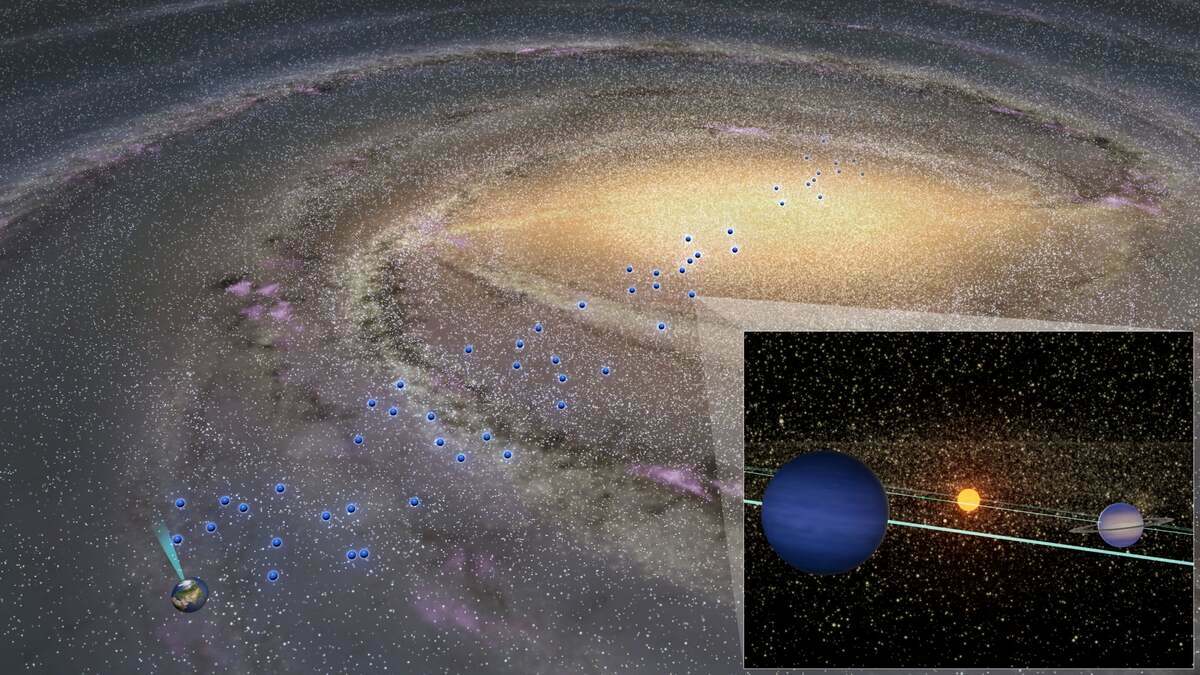Using the Multi-Unit Spectroscopic Explorer (MUSE), German astronomers have performed spectroscopic observations of a blue compact galaxy known as Haro 14. Results of the study, presented in a paper published August 20 on arXiv.org, shed more light on the galaxy’s morphology and its stellar populations.
Blue compact galaxies (BCGs) are about a 10th of the size of a typical spiral galaxy such as the Milky Way. They contain large clusters of young, hot, massive stars, the brightest of which are blue, causing these galaxies to appear blue in colour. Observations show that BCGs are generally low-luminosity, low-metal content dwarf systems undergoing violent bursts of star formation.
The properties of BCGs make them excellent laboratories in which astronomers can investigate the star formation process and the interplay between massive stars and their surroundings. They are essential in order to improve our understanding of galaxy formation and evolution.
Located some 42.4 million light-years away, Haro 14 (other designation NGC 0244) is a nearby BCG with a mass of around 320 million solar masses. Like most known BCGs, Haro 14 is made of an irregular high-surface-brightness (HSB) region placed atop a smooth low-surface-brightness (LSB) underlying stellar component. Previous studies of this galaxy have uncovered a distinct peculiarity—an asymmetry, as HSB region is clearly off-center with respect to the outer isophotes.
To further investigate the observed morphological peculiarity of Haro 14 and to get more information regarding its stellar content, a team of astronomers led by Luz Marina Cairos of the University of Göttingen in Germany, decided to inspect this BCG with Very Large Telescope’s MUSE instrument.
“We performed an exhaustive investigation of the morphology, structure, and stellar populations of Haro 14. We built continuum maps in several spectral regions free of strong emission lines as well as in the brightest emission lines. We also generated synthetic broad-band images in the VRI [V, R and I filters] bands of the Johnson-Cousins UBVRI system, from which we produced colour index maps and SBPs [surface brightness profiles],” the researchers wrote in the paper.
MUSE observations detected numerous discrete sources (clumps) spread out through Haro 14, both in continuum and in emission lines. The astronomers developed a routine that searches for these sources automatically and produced a final catalog with the positions, sizes, and photometry of these sources.
The study confirmed that the stellar distribution of Haro 14 is markedly asymmetric. Continuum maps show that the intensity peak is not centred with respect to the LSB host, but displaced by about 1,600 light-years southwest. A stellar structure was identified, resembling a tai and extending about 6,200 light-years northeast.
Furthermore, the colour maps of Haro 14 revealed a blue, but nonionizing stellar component, covering almost the whole eastern part of this BCG. This component largely overlaps with the tail structure detected in the continuum maps.
In general, the research identified at least three different stellar populations in Haro 14, namely: a very young stellar component, an intermediate-age component, and an extended LSB component.
“We conclude that there are at least three different stellar populations in Haro 14: the current starburst of about 6 Myr; an intermediate-age component of between ten and several hundred million years; and a red and regular host of several gigayears,” the authors of the paper explained.
